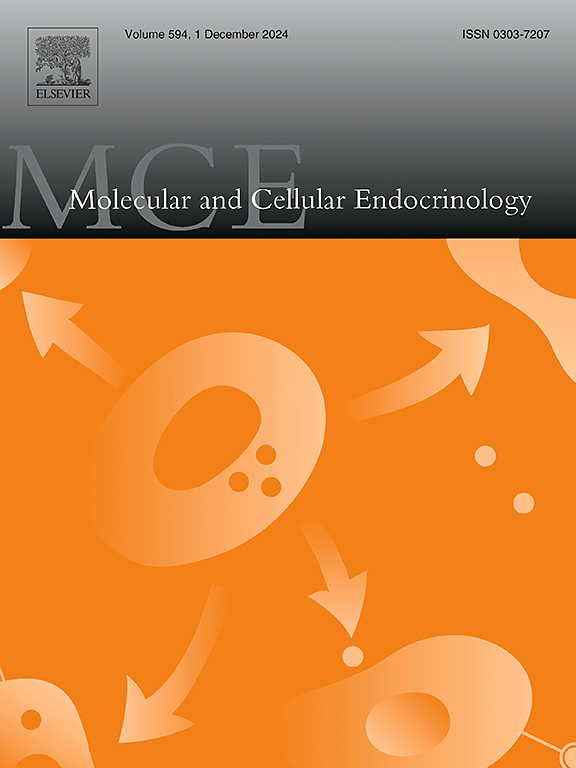Estrogen upregulates nucleophosmin 1 expression in mouse uterus through MYC induction
IF 3.6
3区 医学
Q2 CELL BIOLOGY
引用次数: 0
Abstract
The uterus undergoes transcriptional changes regulated by estrogen and progesterone throughout the menstrual cycle. Although the estrogen-regulated transcriptome has been extensively studied, the implications of gene expression alterations are not fully elucidated. Our analysis of publicly available RNA-seq and ChIP-seq data revealed that estrogen upregulates genes involved in ribosome biogenesis and MYC pathway. Specifically, we observed increased expression of nucleophosmin 1 (NPM1), a key regulator of ribosome biogenesis with MYC-binding sites in its promoter, in estrogen-stimulated endometrial epithelium. Utilizing an estrogen receptor (ER) antagonist, we demonstrated that estrogen's upregulation of Npm1 and Myc in the uterus is dependent on ER activation. Further, estrogen treatment of isolated endometrial epithelium from the uterus confirmed an increase in Myc and Npm1 expression. The application of Myc siRNA attenuated the estrogen-induced Npm1 expression in the isolated epithelium. These findings suggest that estrogen-enhanced MYC expression, mediated by ER, may play a crucial role in Npm1 expression in the uterus. This, in turn, contributes to ribosome biogenesis, underscoring its significance in endometrial proliferation and thickening. Therefore, our findings offer significant insights into NPM1 role in normal endometrial physiology, highlighting the connection between estrogen-mediated transcriptional regulation and ribosome biogenesis in the uterus.
雌激素通过MYC诱导上调小鼠子宫内核磷蛋白1的表达。
在整个月经周期中,子宫在雌激素和黄体酮的调控下发生转录变化。尽管雌激素调控的转录组已被广泛研究,但基因表达改变的含义尚未完全阐明。我们对公开可用的RNA-seq和ChIP-seq数据的分析显示,雌激素上调参与核糖体生物发生和MYC途径的基因。具体来说,我们观察到在雌激素刺激的子宫内膜上皮中,核磷蛋白1 (NPM1)的表达增加,NPM1是核糖体生物发生的关键调节因子,其启动子中有myc结合位点。利用雌激素受体(ER)拮抗剂,我们证明了雌激素在子宫中上调Npm1和Myc依赖于ER的激活。此外,对子宫分离的子宫内膜上皮进行雌激素治疗证实Myc和Npm1表达增加。应用Myc siRNA可减弱雌激素诱导的离体上皮中Npm1的表达。这些发现表明,雌激素增强的MYC表达,由ER介导,可能在子宫内Npm1表达中起关键作用。这反过来又促进了核糖体的生物发生,强调了其在子宫内膜增殖和增厚中的重要性。因此,我们的研究结果为NPM1在正常子宫内膜生理中的作用提供了重要的见解,突出了雌激素介导的转录调节与子宫内核糖体生物发生之间的联系。
本文章由计算机程序翻译,如有差异,请以英文原文为准。
求助全文
约1分钟内获得全文
求助全文
来源期刊

Molecular and Cellular Endocrinology
医学-内分泌学与代谢
CiteScore
9.00
自引率
2.40%
发文量
174
审稿时长
42 days
期刊介绍:
Molecular and Cellular Endocrinology was established in 1974 to meet the demand for integrated publication on all aspects related to the genetic and biochemical effects, synthesis and secretions of extracellular signals (hormones, neurotransmitters, etc.) and to the understanding of cellular regulatory mechanisms involved in hormonal control.
 求助内容:
求助内容: 应助结果提醒方式:
应助结果提醒方式:


